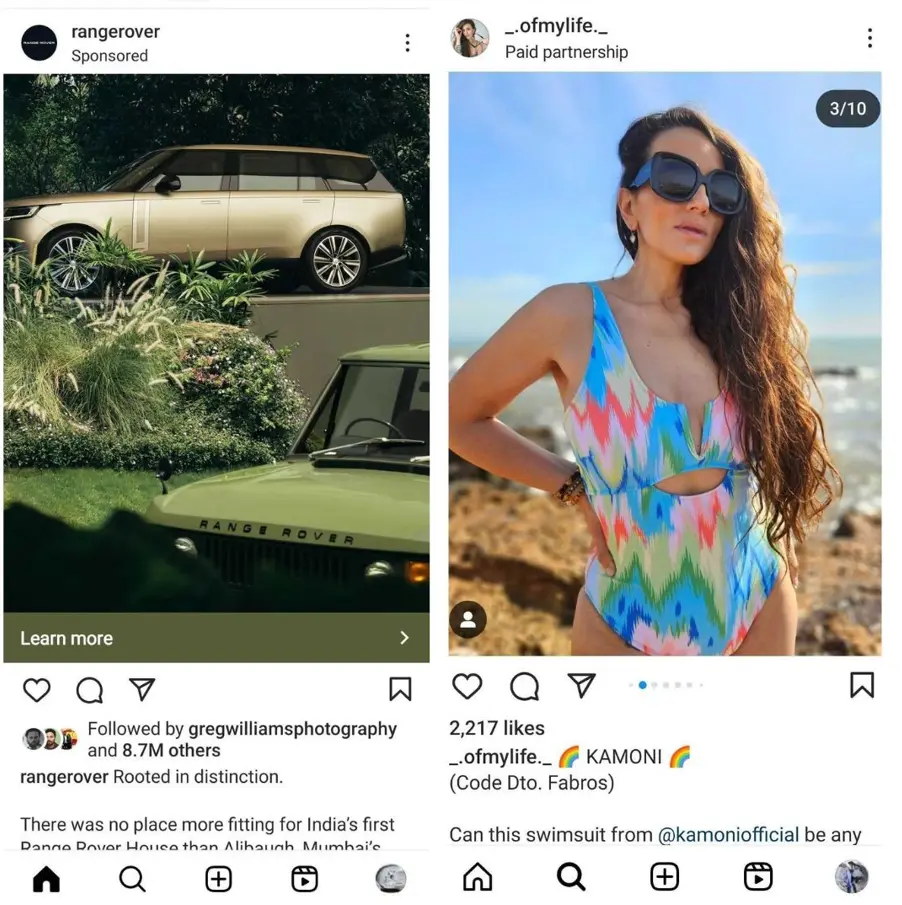More About Sponsored Posts
When the word “influencer” became mainstream in 2013, sponsored posts rose. This type of marketing effort includes paying platforms or influencers to get your content published and promoted on high-traffic, high-profile websites or channels. On social media platforms like Facebook or Instagram, sponsored posts look like organic content and blend seamlessly into the feed.
Depending on the social media site you’re advertising on, the post could be photos, videos, a carousel, or text. Sponsored content may contain linkbacks and call to actions (CTAs) directing visitors to the brand’s website.
How do sponsored posts work? Answering this question may be challenging, but we can understand the basic structure of a sponsored post.
Each sponsored post has three participants:
- The Sponsor: The business or brand paying the influencer or brand to promote its product or service.
- The Partner: The influencer, brand, or platform ad promoting the sponsor on their social media accounts or other platforms.
- The Post: The content itself, which can be a social media advertisement, blog post, article, or shoutout in a YouTube video.
It is common for businesses to seek out influencers in their categories and for content creators to approach brands giving their services. Following their decision to collaborate, the parties decide on the conditions of the collaboration, including the kind of content to be created, how long it will last, and the cost.
These posts appear in the users’ feed tagged as sponsored posts. Below is an example of both types of sponsored posts. The one on the left is a sponsored ad created by Land Rover on Instagram. The right-side sponsored post is created by the influencer to promote Kamoni’s swimsuit.


